PERICOPINI - PERICOPINE TIGER MOTHS
Confined to the New World, these are large, but often delicately-built Tiger Moths. many of which are distinctly "butterfly-like" in appearance. Brightly-coloured and often sexually dimorphic, there are a total of 300 species, mainly distributed in the Neotropics. Several species are aposematic, other are mimics of other Lepidopterans. Subcostal and radial veins are fused for only a short portion of their length. Larvae are brightly-coloured with three verrucae above the coxa on the mesothorax. Setae are barbed and, with the exception of those on the prolegs, arise from the verrucae. Crochets are in heteroideous mesoseries. Pupae are ornate and often develop in a delicate cocoon. Food plants include Fabaceae, Asclepiadaceae, Apocyanaceae, Boraginaceae and Compositae.
Click on the photos to enlarge them to full size.
Thanks to Sergio Rios and Paulo Schwirkowski for assistance with identification of some images on this page.
Designed by Paul Smith 2006. This website is copyrighted by law. Material contained herewith may not be used without the prior written permission of FAUNA Paraguay. Photographs on this page were taken by Paul Smith and Chris Elder and are used with their permission.
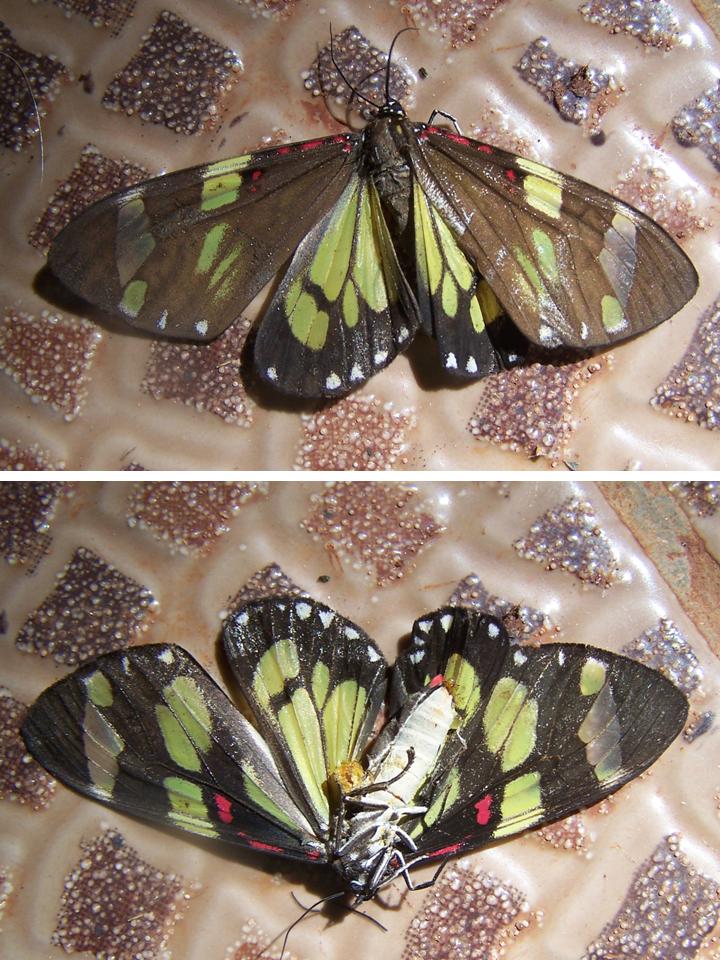
|
|
FIGURE 1
|
|
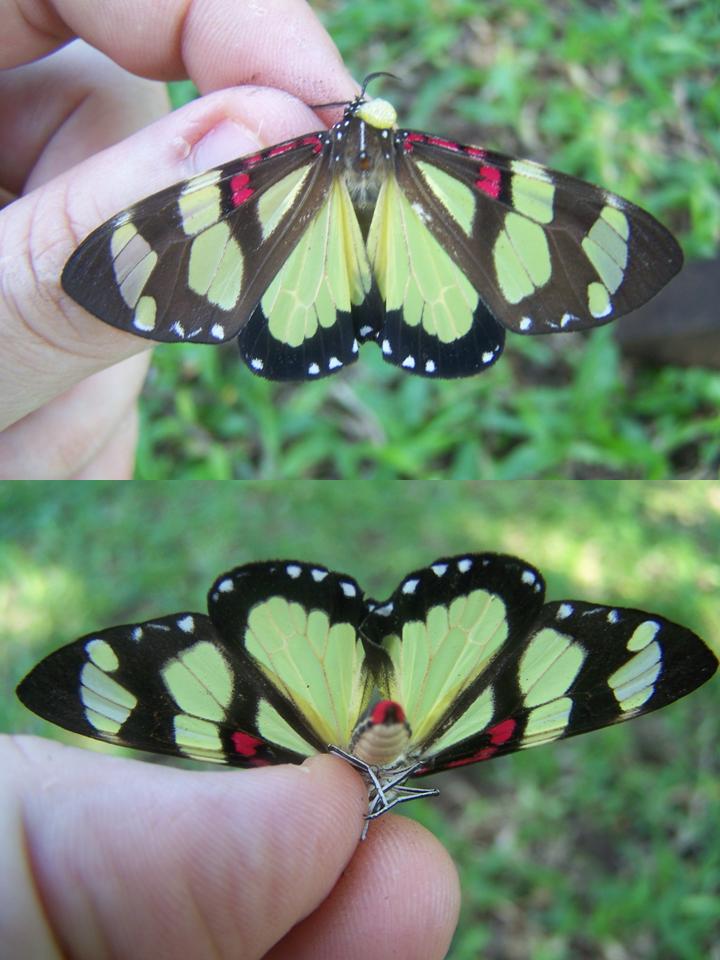
|
|
FIGURE 2
|
|
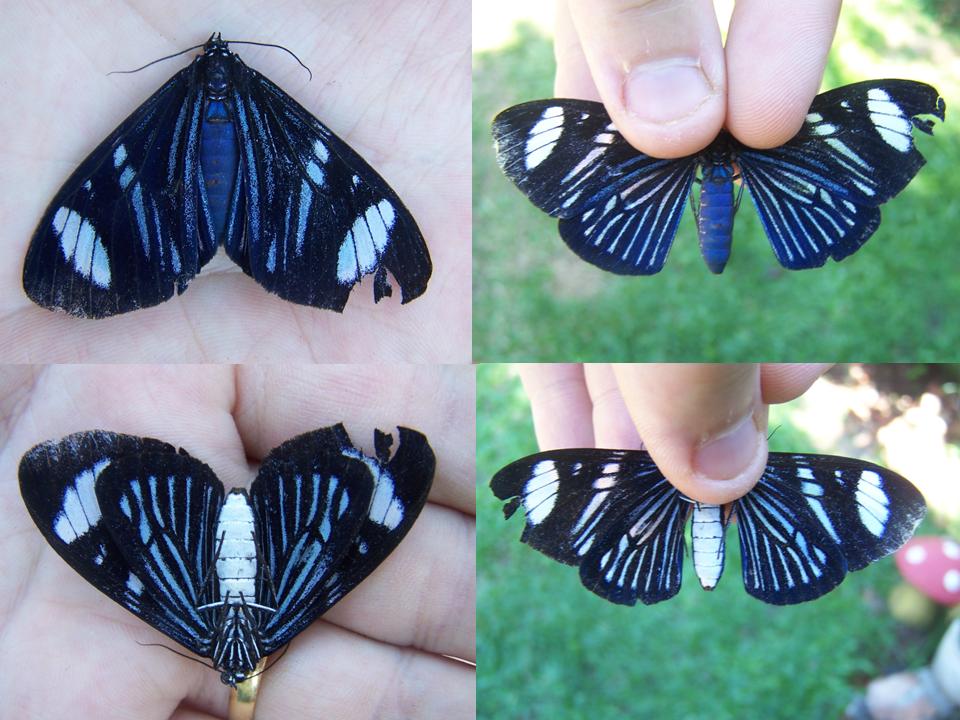
|
|
FIGURE 3
|
|
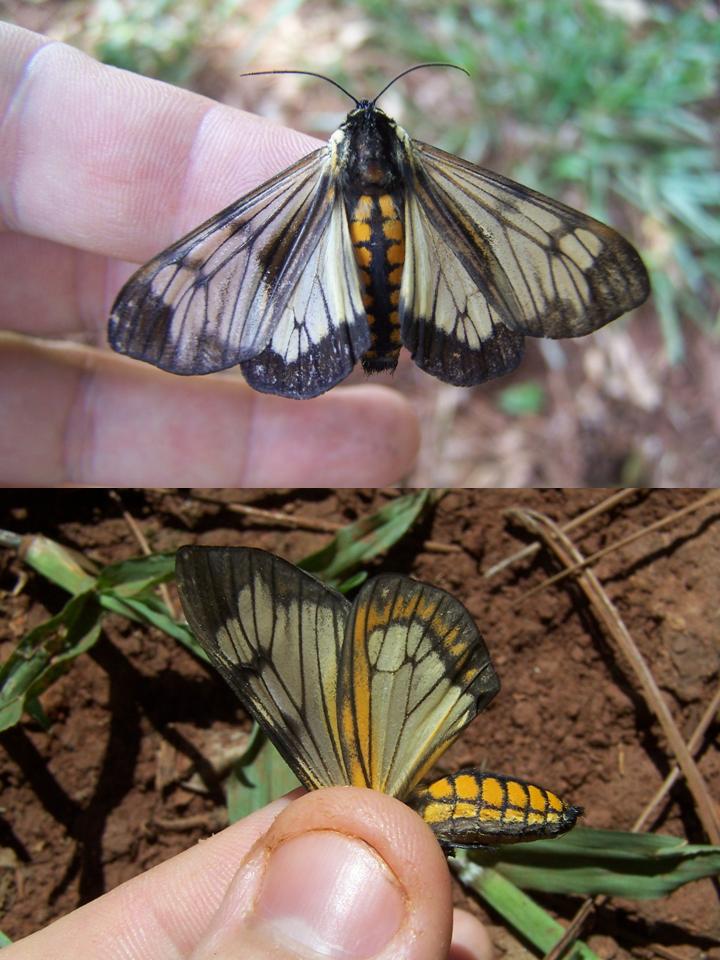
|
|
FIGURE 4
|
|
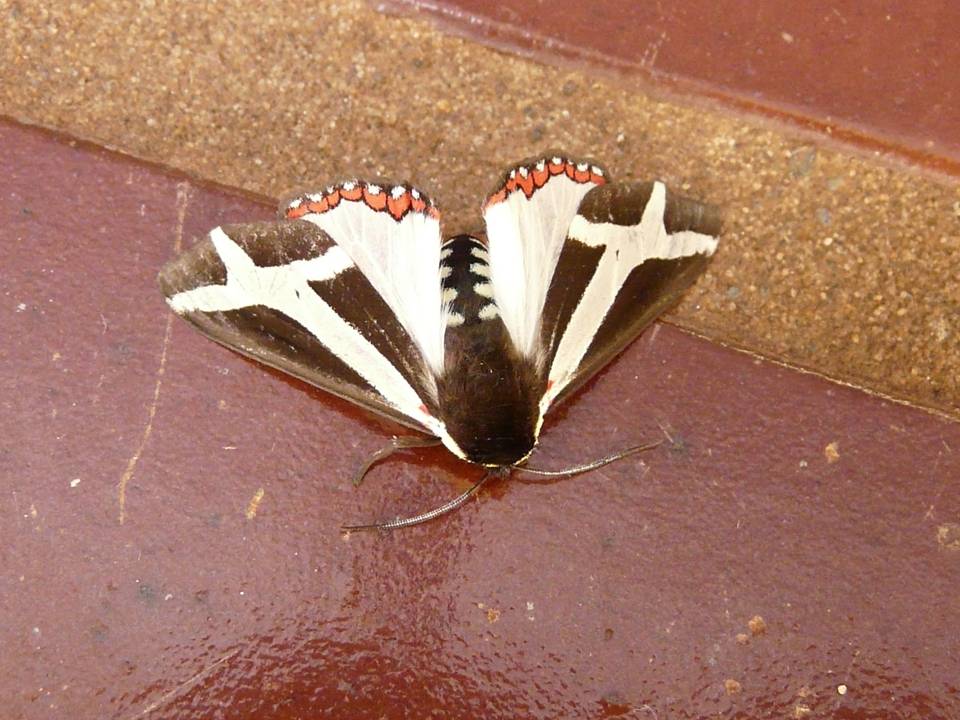
|
|
FIGURE 5
|
|
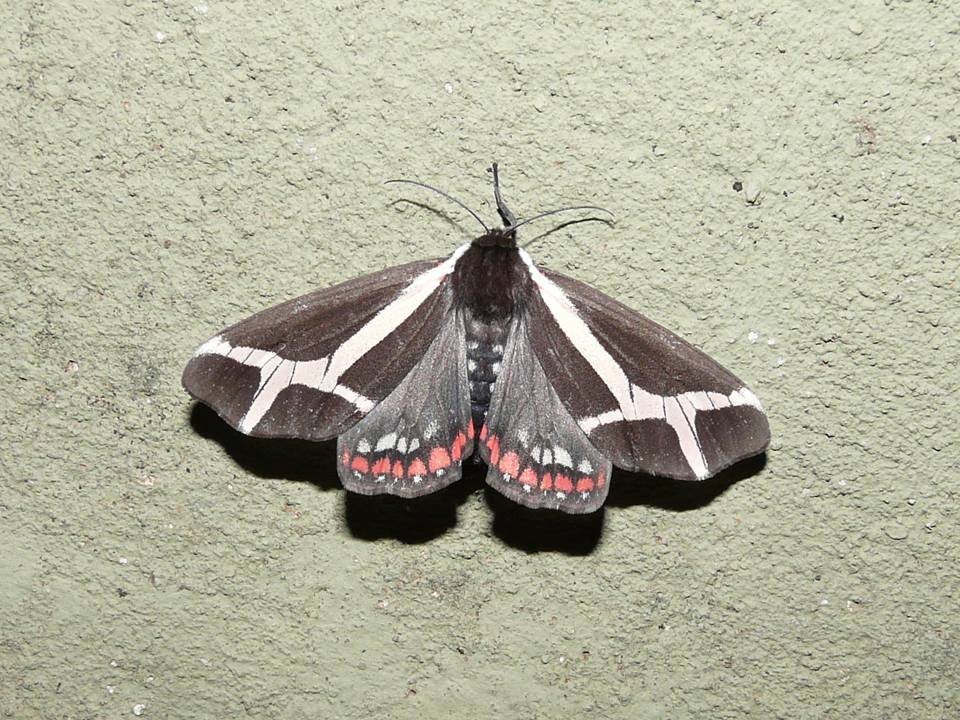
|
|
FIGURE 6
|
|
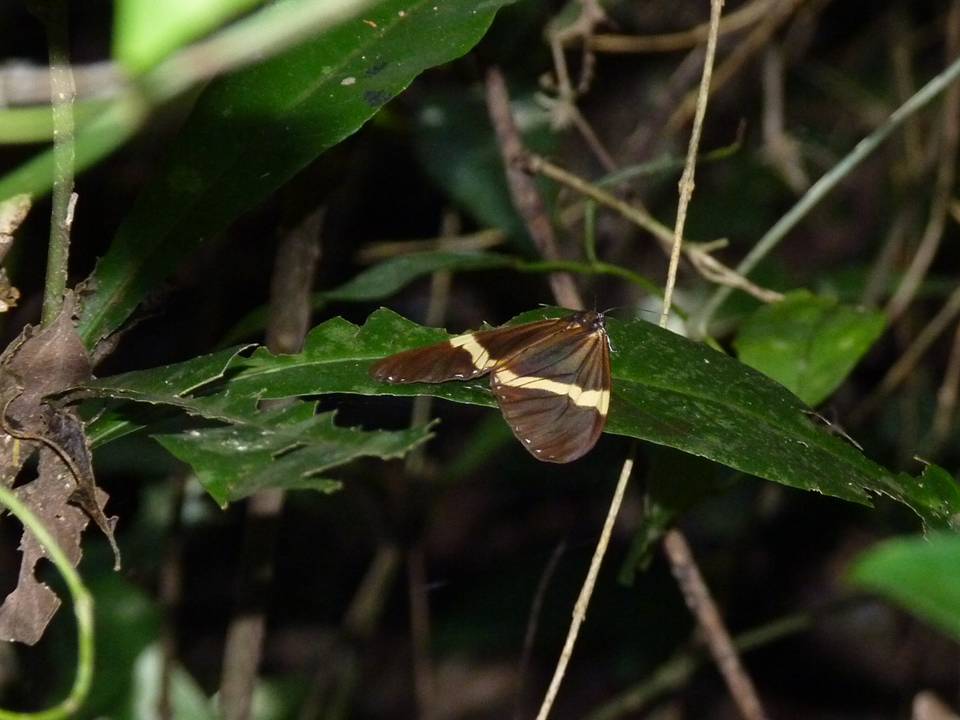
|
|
FIGURE 7
|
|
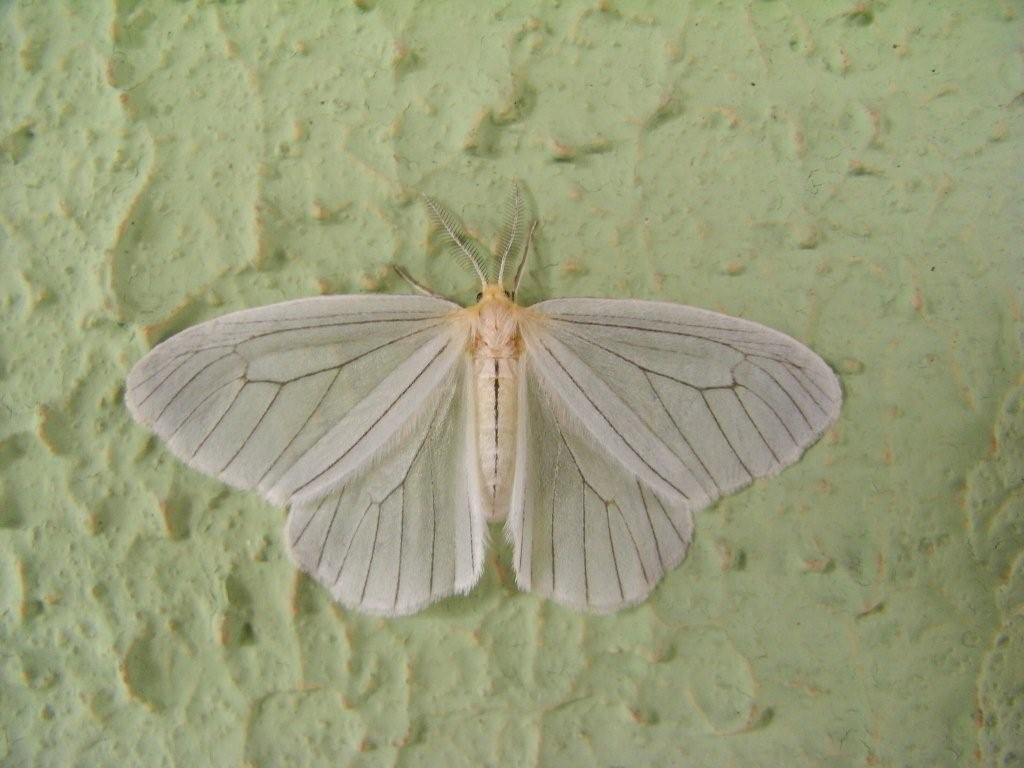
|
|
FIGURE 8
|
|
FIGURE 1 - Phaloe cruenta - Encarnación, Departamento Itapúa (Paul Smith April 2007).
FIGURE 2 - Unidentified sp. - PROCOSARA, PN San Rafael (Paul Smith March 2007).
FIGURE 3 - Hypocrita bicolora - PROCOSARA, PN San Rafael (Paul Smith December 2007).
FIGURE 4 - Dysschema neda - PROCOSARA, PN San Rafael (Paul Smith March 2008).
FIGURE 5 - Dysschema sacrifica male - Encarnación, Departamento Itapúa (Paul Smith November 2009).
FIGURE 6 - Dysschema sacrifica female - Encarnación, Departamento Itapúa (Paul Smith August 2009).
FIGURE 7 - Unidentified sp. - PROCOSARA, PN San Rafael (Chris Elder November 2007).
FIGURE 8 - Xenosoma sp - location unknown (Jonathan Newman October 2009).


